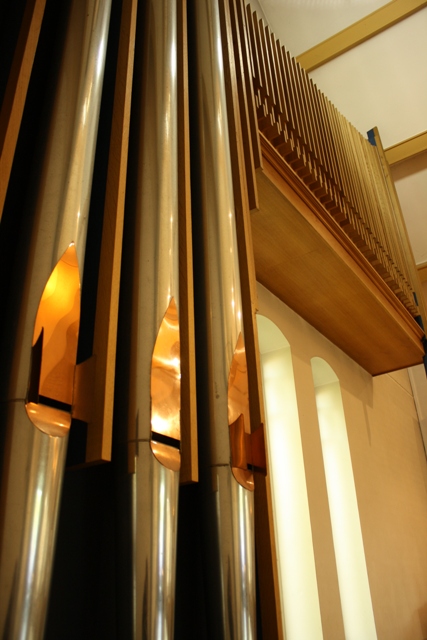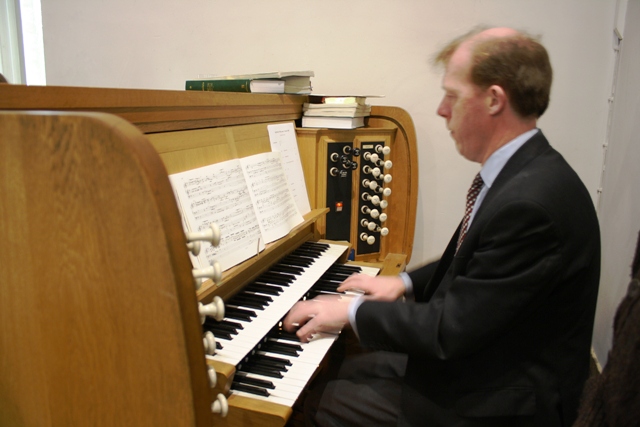The Organ.

The organ is not what it at first glance seems. Although the organist sits at a traditional console with keys, stops and pedals there the similarity with a traditional organ ends for behind these is a bank of electronics and microprocessors that produce the sound and send this to the bank of speakers hidden behing the casing on the wall. The organ has no functioning pipes - the three shown in the photograoph are decorative.
The pneumatic or wind driven organ has a long history going back to the ancient Greeks and it has a long association with Christian worship. In the fourth century Saint Jerome knew of one in Jerusalem that was so loud that could be heard on the Mount of Olives. Pope Saint Vitalian whose pontificate lasted from 657 to 672 is credited with introducing one into the Roman Church to help people sing. The organ survived the reforms of the Council of Trent and was popularised for worship by other Christian traditions. Before the refprms of the Second Vatican Council, people attending Mass would have probably been more familiar with hearing the organ rather than the voice of the priest who, with his back to the congregation, would recite the Eucharistic Prayer in a low voice.
"The organ and other lawfully approved musical instruments are to be placed in an appropriate place so that they can sustain the singing of both the choir and the congregation and can be heard with ease by all if played alone. It is appropriate that, before being put into liturgical use, the organ be blessed according to the rite described in the Roman Ritual.
In Advent the organ and other musical instruments should be used with a moderation that is consistsnt with the season's character and does not anticipate the full joy of the Nativity of the Lord.
In Lent the playing of the organ and musical instruments is allowed only to sustain sunging. Exceptions are Laetare Sunday (Fourth Sunday of Lent), Solemnities and Feasts."
General Instruction of the Roman Missal 313.
Aleluia!
Praise God in his holy place,
praise him in the heavenly vault of his power,
praise him for his mighty deeds,
praise him for all his greatness.
Praise him with fanfare pf trumpet,
praise him with harp and lyre,
praise him with tamborines and dancing,
praise him with strings and pipes,
praise him with the clamour of cymbals,
praise him with triumphant cymbals,
Let everything that breathes praise Yahweh.
Slleluia!
Psalm 150.
